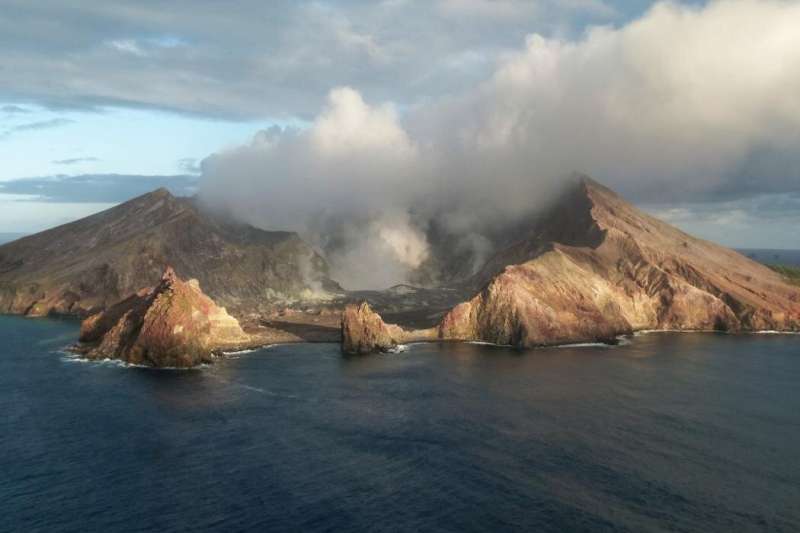A new automated system could provide a warning when an eruption on Whakaari (White Island) in the Bay of Plenty becomes more likely. Credit: Professor Shane Cronin
Kiwi volcanologists and engineers have finished testing an automated system that provides a warning when an eruption on Whakaari (White Island) becomes more likely.
The new system, which uses machine learning to detect patterns in seismic data, provides constant monitoring in real-time, and could provide warnings hours or days before an eruption occurs.
Lead researcher, University of Canterbury Civil and Natural Resources Engineering Senior Lecturer Dr. David Dempsey, says the system, which has been tested operationally over the past two years, compares well against the existing system which is based on the opinions of expert volcanologists.
"We hope that this can help volcanologists as they grapple with the tricky job of determining the odds of an eruption."
He says active volcanoes often attract tourists, but the safety of tourist access depends in part on how accurately volcanologists can estimate the probability of an eruption.
"If an eruption is more likely, then access can be restricted. Our system provides information for decision-makers as they weigh those choices. It is also fast, always watching, and has perfect memory of the past, which makes it a great assistant for human operators."
An article describing the testing and accuracy of the system, a collaborative project between the University of Canterbury and the University of Auckland, has been published in the international Bulletin of Volcanology this week.
One probability model developed by Dr. Dempsey and his team was a warning system that would anticipate six out of seven eruptions at the cost of 14 warning days each year.
During a warning, the chance of an eruption is about 8% in 48 hours, which is more than 100 times higher than normal.
A second, more sensitive model, estimated eruption odds 400 times higher than normal when it was shown the 48 hours of data from just before the December 2019 eruption on Whakaari.
"Alongside our operational tests, these retrospective analyses—replaying a model on the past—are the best way to understand how systems like these might work in future eruptions," Dr. Dempsey says.
More information: D. E. Dempsey et al, Evaluation of short-term probabilistic eruption forecasting at Whakaari, New Zealand, Bulletin of Volcanology (2022). DOI: 10.1007/s00445-022-01600-5
Provided by University of Canterbury
























